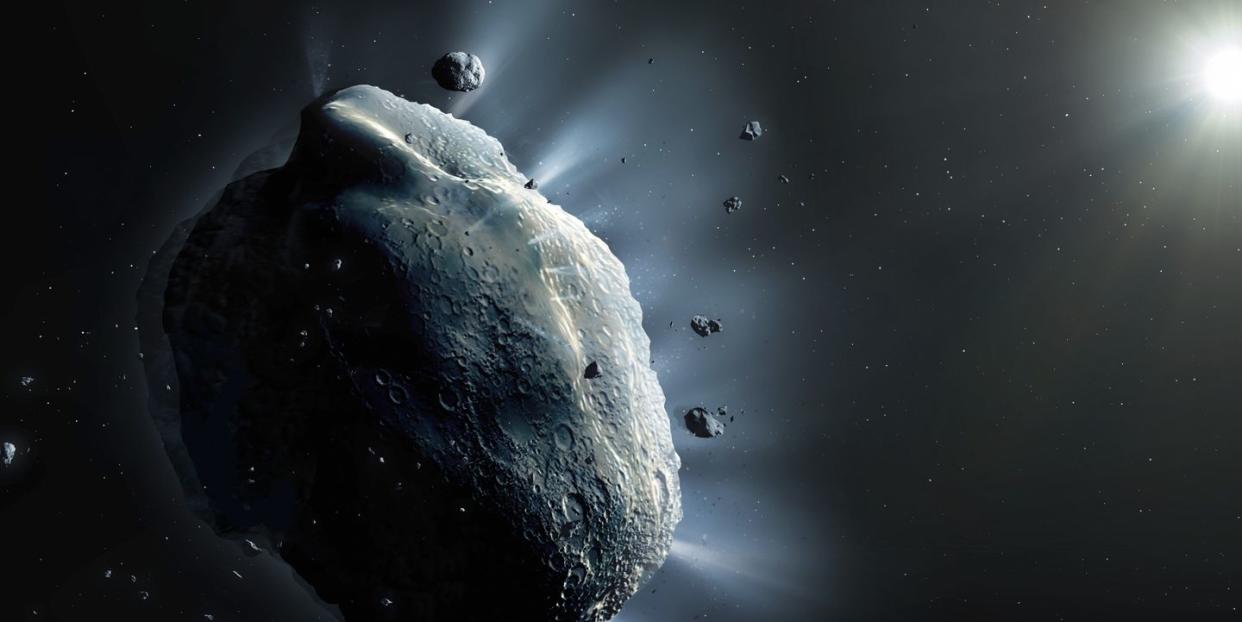An Island-Sized Asteroid Will Zip Past Earth This Friday

Asteroid 7335 is about one mile wide, making it roughly equivalent to four Empire State Buildings stacked on top of each other.
While classified as “potentially hazardous,” it will harmlessly bypass Earth.
NASA’s asteroid deflection mission, DART, will collide with a different asteroid this fall to test its capability.
Asteroid 7335 (1989 JA) is as large as Plum Island off the coast of New York, and it’s on target to pass close to Earth on Friday, May 27. But don’t worry—the giant rock will only get as close as 2.5 million miles from our planet as it zips along at eight miles per second.
🪐 For more great space coverage, get unlimited access to Pop Mech Pro—starting NOW.
NASA’s asteroid tracker, the Center for Near-Earth Object Studies (CNEOS) at the Jet Propulsion Laboratory (JPL) in La Cañada Flintridge, California, classifies it as a “potentially hazardous” Near-Earth Object. That’s because it enters the zone within 120 million miles of the sun, bringing its orbital path relatively close to Earth’s. About 17 relatively diminutive asteroids impact Earth every day, causing little to no disturbance. That’s small potatoes compared to the number of known Near-Earth Asteroids, which currently stands at 28,949. CNEOS only classifies a tiny fraction of comets and asteroids as potentially hazardous; these are at least 460 feet across and range within 4.6 million miles of Earth’s orbit around the sun.
First discovered in 1989, Asteroid 7335 does laps around the sun every 861 days while overlapping with Earth’s orbit. It’s a rocky giant that has the potential to inflict a global climate disaster that could lead to famine and loss of life if it ever does intersect with Earth. However, that’s extremely unlikely. During Earth’s early period, about four billion years ago, bombardments were quite common and helped to shape our planet. Now, they are statistically quite rare, with asteroids this huge only hitting our planet once every 500 million years or so.
Still, NASA has launched a spacecraft to test how well humans can deflect a hazardous space object. The Double Asteroid Redirection Test (DART) is due to smash into the 525-foot-wide Dimorphos asteroid in late September or early October of 2022. Dimorphos isn’t considered a danger to Earth, but it makes a good test subject because of its size and location. The collision should deflect the rock’s current orbital path and put humanity one step closer to averting the big one if it ever gets uncomfortably close.
You Might Also Like

